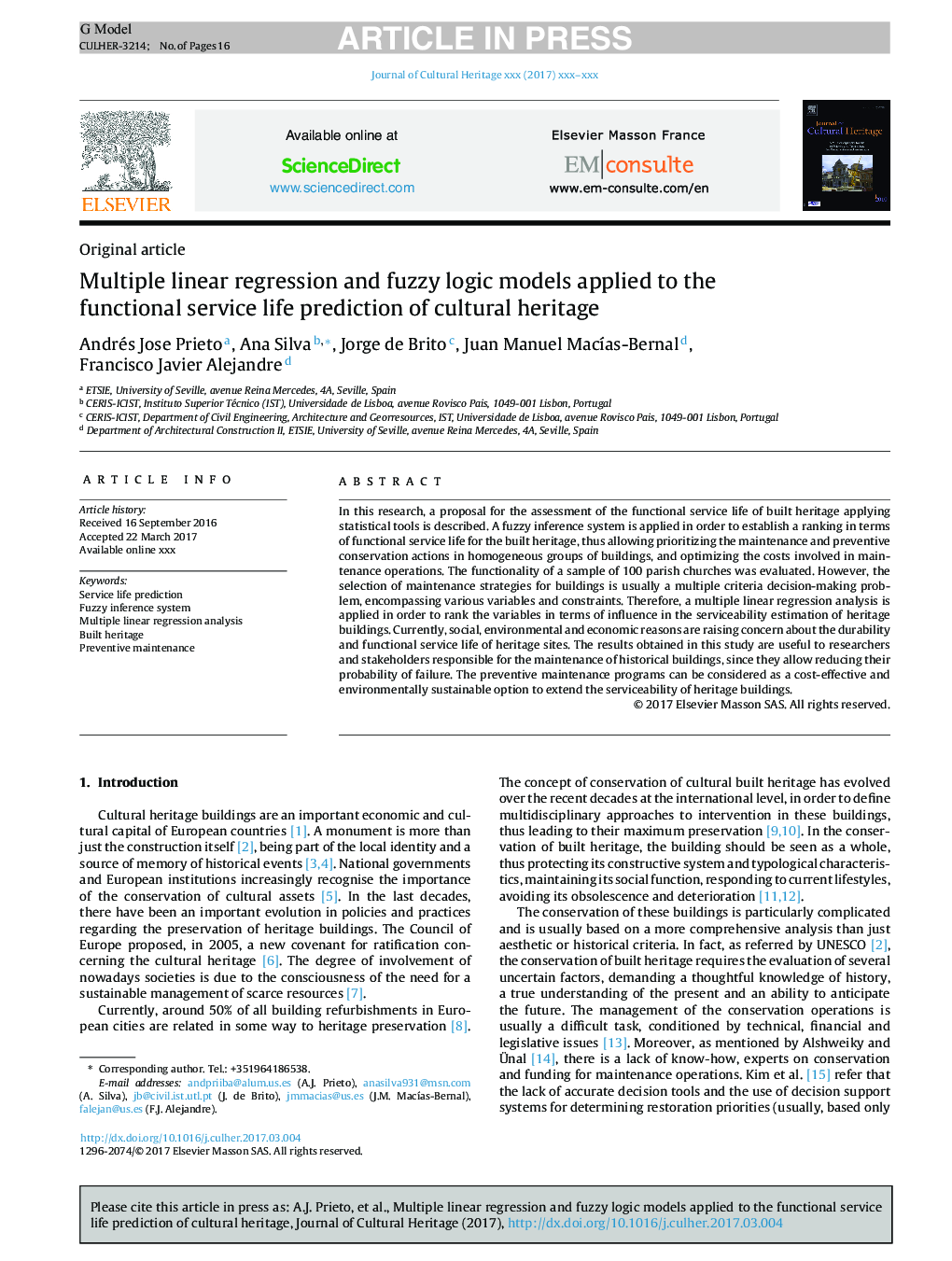| Article ID | Journal | Published Year | Pages | File Type |
|---|---|---|---|---|
| 5112616 | Journal of Cultural Heritage | 2017 | 16 Pages |
Abstract
In this research, a proposal for the assessment of the functional service life of built heritage applying statistical tools is described. A fuzzy inference system is applied in order to establish a ranking in terms of functional service life for the built heritage, thus allowing prioritizing the maintenance and preventive conservation actions in homogeneous groups of buildings, and optimizing the costs involved in maintenance operations. The functionality of a sample of 100 parish churches was evaluated. However, the selection of maintenance strategies for buildings is usually a multiple criteria decision-making problem, encompassing various variables and constraints. Therefore, a multiple linear regression analysis is applied in order to rank the variables in terms of influence in the serviceability estimation of heritage buildings. Currently, social, environmental and economic reasons are raising concern about the durability and functional service life of heritage sites. The results obtained in this study are useful to researchers and stakeholders responsible for the maintenance of historical buildings, since they allow reducing their probability of failure. The preventive maintenance programs can be considered as a cost-effective and environmentally sustainable option to extend the serviceability of heritage buildings.
Keywords
Related Topics
Physical Sciences and Engineering
Chemistry
Physical and Theoretical Chemistry
Authors
Andrés Jose Prieto, Ana Silva, Jorge de Brito, Juan Manuel MacÃas-Bernal, Francisco Javier Alejandre,
